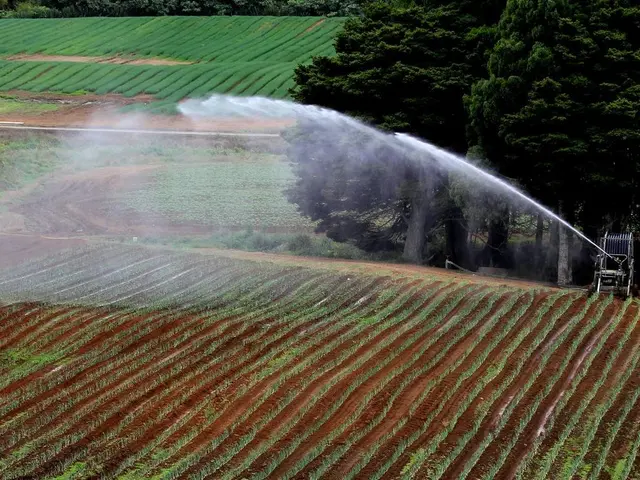A Crisis in Germany's Forests: The Plight of the Oaks
Alert Sounded for Forests Under Pressure due to Stressors
Berlin (dpa) - The heat, drought, and pests are taking their toll on Germany's forests. The latest survey for 2024 reveals that four out of five common tree species are still ailing, with half of all oaks now suffering severe crown damage. Minister Alois Rainer (CSU) calls this a "wake-up call," urging investments in reforestation, forest conversion, and research to ensure the health of future forests.
"Our forests are under constant pressure," says Rainer. Unfortunately, the good weather conditions in the previous year haven't promised any relief. The survey report states that damage levels remain sky-high. Elderly trees over 60 years old are particularly affected. While there's no significant improvement compared to 2023, there's also no significant deterioration. The trees are still weakened by dry years since 2018.
Leaf density is a key indicator of tree health. The 2024 findings reveal minimal change. Again, 36 percent of all trees show severe damage, with more than a quarter of their crowns bare compared to healthy trees. The proportion of trees with warning-level lightening—between 11 and 25 percent—has risen to 43 percent from 44 percent in 2023. Only 21 percent of trees have full, intact crowns, down from 20 percent previously.
The annual forest condition survey, conducted by the states since 1984, assesses crown leaf mass and assigns damage levels to 9,816 trees at 409 points. The results are then calculated nationwide by the federal Thünen Institute.
The Oak's Perilous State
The survey focuses on four main species that account for approximately 70 percent of all trees. Of particular concern is the state of oaks. A "remarkably high proportion" of 51 percent have significantly thinned crowns compared to 44 percent in the 2023 survey. The report attributes this to infestations by fungi such as powdery mildew and damage caused by insects, with the oak processionary caterpillar playing a significant role in many regions.
For beech trees, the proportion of trees with significantly thinned crowns remains the same as in 2023 at 46 percent. For pines, it remains at 24 percent. For spruces, the proportion with significant damage decreases by four percentage points to 39 percent. Covering about one-third of Germany's land area, forests are essential as a habitat, climate protector, and economic factor.
"We need to act, make our forests more resilient, and adapt to climate change," says Rainer. "Forests are not just nature; they are a habitat, a climate protector, and an economic factor." Forests regulate the climate, store carbon, and preserve biodiversity, while also contributing significantly to the country's prosperity as a supplier of wood and raw materials.
Climate change necessitates forest management transformation. Rainer urges support for forest owners and a reduction of bureaucratic hurdles to facilitate this transition. Active climate protection also lies in forest use and forest conversion.
Environmentalists and the Ongoing Debate
Environmental organization Greenpeace found the report alarming and called for action. "Instead of continuing to fell trees and weaken the forest ecosystem, we must consistently protect our natural broad-leaved mixed forests," they demand. Coniferous plantations should be converted to resilient, diverse broad-leaved forests to create a cool, moist internal climate resilient to the climate crisis.
The Association of German Forest Owners' Associations concurs, asserting that "our forests are under immense climate stress." Even with more rain in 2024, long-term climate impacts have caused substantial damage. The condition varies greatly regionally, necessitating location-specific solutions. Tree owners address the stress through care and the conversion to climate-resilient mixed forests, an operation that is labor-intensive and costly.
[1] Enrichment Data: The issue with oak trees is most severe, with mean defoliation higher than other tree species. The primary cause of damage is attributed to oak-feeding insect communities, particularly the oak splendid beetle, as well as mildew and late frosts. Regeneration challenges are also noted, due to difficulties in the pedunculate oak regeneration in German oak forests.
[2] Enrichment Data: Forest management requires support and reduced bureaucratic hurdles to facilitate the transition needed to adapt to climate change. Forest use and forest conversion are important for active climate protection.
[3] Enrichment Data: The Association of German Forest Owners' Associations acknowledges the immense climate pressure on forests and highlights the need for location-specific solutions, as damage varies regionally.
- The crisis in Germany's forests is a matter of workplace-wellness, as the health of trees plays a significant role in the overall health and wellness of the environment.
- The crisis has led to a focus on other science disciplines, including environmental-science, as researchers seek to understand the impact of climate-change on forests.
- The survey findings reveal that chronic-diseases, such as infestations by fungi and damage from insects, have caused severe crown damage to half of all oaks.
- The survey report mentions that mental-health, in the form of the trees' stress responses, is also a concern.
- In response to the crisis, Minister Alois Rainer calls for increased medical-conditions, including investments in reforestation and forest conversion.
- The crisis has impacted the fitness-and-exercise routines of oaks, as drought and pests have left many with significantly thinned crowns.
- Skin-care is also a concern, as damage to the trees' leaves affects their ability to regulate temperature and moisture.
- Therapies-and-treatments for the affected trees include the conversion to climate-resilient mixed forests, a labor-intensive and costly process.
- The nutrition of the forest ecosystem is under threat, as the loss of trees impacts the food chain for various wildlife species.
- The crisis has implications for the finance sector, as it affects the real-estate market, with decreased land value and subsequent impact on personal-finance.
- Investing in trees, either through reforestation or sustainable forestry, can be seen as an opportunity for financial growth.
- The heat, drought, and pests affecting the forests can be linked to the changes in weather patterns, highlighting the urgency of weather forecasting and data-and-cloud-computing.
- The crisis has led to discussions in the business community about the importance of environmental-science and corporate-social-responsibility in relationship to their environmental impact.
- The plight of the oaks has raised awareness about the importance of fashion-and-beauty choices, such as the impact of synthetic fibers on the environment.
- The crisis has also brought the issue of pets into the spotlight, as their role in spreading pests and contributing to forest destruction is examined.
- The crisis in Germany's forests is not only an environmental concern, but also a travel issue, as popular tourist destinations with oak forests may be impacted by the decrease in tree density.







